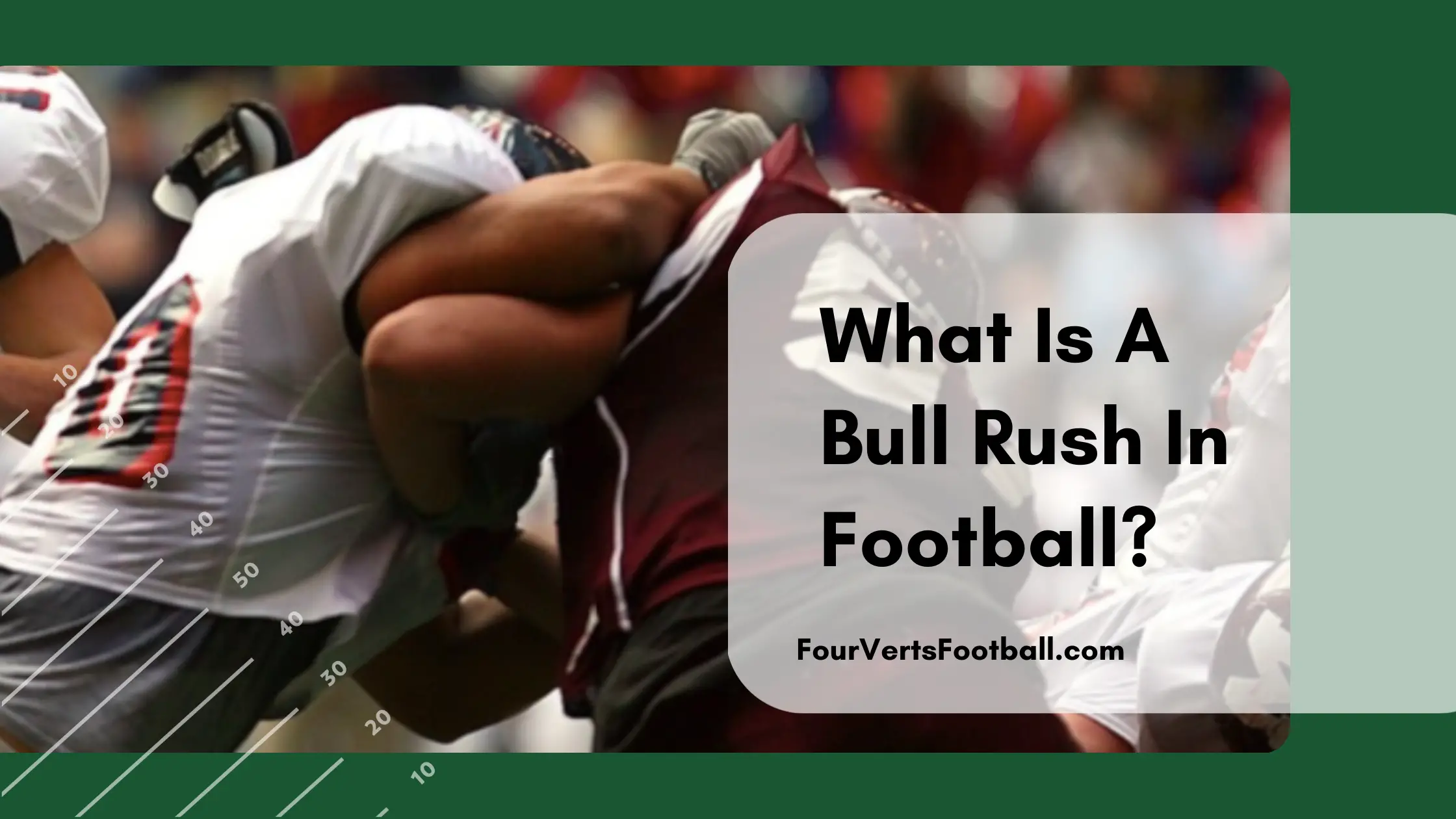A bull rush in football is a pass-rushing move that utilizes power and strength to push opposing offensive lineman into their own backfield. This technique requires less skill and finesse than other pass-rushing moves but can be incredibly effective.
A bull rush consists of a defensive lineman running directly at the offensive lineman and pushing him back with both hands. No deception, hand moves, or stutter steps are used when attempting a bull rush.
How To Do A Bull Rush
To use a bull rush you must first start the play in three or four-point stance. Once the ball is snapped you want to be sure to stay low. As the saying goes in football “low man wins”.
First, you will quickly push forward from your low base placing your hands on the chest of the offensive lineman. You want to be quick with your first step as catching the lineman off guard greatly increases your chance of the bull rush working.
Then you want to keep both hands on the chest of the offensive lineman with both your arms fully extended. You will use the power of your legs to continue to push the lineman backwards. When using a bull rush your legs should always be churning.
If you stop your momentum it will be difficult to push the offensive lineman backwards again.
Once you have pushed the lineman backwards into the pocket you have options. You can attempt a swim or spin move to break off from the lineman and go for the sack. Or you can continue to push the lineman back to further disrupt the pocket.
If you have bull rushed your lineman all the way to the quarterback you may attempt to reach around him to get a shot at the quarterback. This is an incredibly hard tackle to pull off considering the blocker is still between you and the quarterback. But even just a handful of jersey may be enough for a defensive lineman to bring the quarterback down.
Pros And Cons
Pros
Disrupts The Pocket
One of the major benefits of a bull rush is that it disrupts the pocket. Even if you don’t come down with the sack you will likely still get your lineman out of position. If you are succesful enough to get him into the backfield you will likely take the quarterback off his spot.
This means the quarterback will not be able to sit comfortably in the pocket but instead will have to move to avoid the pressure. This makes it more difficult for the quarterback to throw and also throws off the timing of the play.
Can be used in conjunction with other moves
As we stated earlier in the article a bull rush can be used in conjunction with other pass rushing moves. When you start a play with a spin move it is likely that is the only pass rushing move you will attempt on the play.
While a bull rush allows you to incorporate spins and swims at nearly any point of the bull rush. This may allow you to break into the backfield for a sack. Or even just give you enough separation from your lineman to sack the quarterback if he decides to step up in the pocket.
Helps Out Teammates
Another added benefit of the bull rush is that it benefits your teammates on the defensive line. You may have noticed that when a quarterback gets sacked it is often due to multiple defenders pressuring him in the pocket.
A bull rush is a great example of this. As it can cause the quarterback to run directly into other pass rushers. If you left defensive end bull rushes the right tackle all the way into the backfield the quarterback will have no choice but to run to his left.
This movement to the left will give the other defensive lineman opportunities to get to the qb. These are opportunities they wouldn’t have had if he stayed in the pocket.
Cons
Lower Sack Rate
One negative aspect of a bull rush is that it will likely have a lower sack rate when compared to spin moves, swims and other pass rush techniques. This is because the main purpose behind a bull rush is not to get the sack but to disrupt the pocket.
If you are using a bull rush you are committed to helping the team. This may not result in the personal statistics you are hoping for. But it will help the defensive line as a whole.
Drains Energy Of Defensive Player
The other negative aspect of bull-rushing that we are going to cover is the energy it takes. A bull rush as we already covered relies on power to beat your blocker. This means you are going full tilt each time you line up for a snap.
Not to mention it is always going to take less energy for the offensive lineman to play pass protection than it will the defensive lineman to bull rush.
This is why you notice defensive lineman placing their hands on their hips on long defensive drives. If you are going to use the bull rush consistently you need to be in great shape or have some extra defensive lineman that can rotate into your position when needed.

